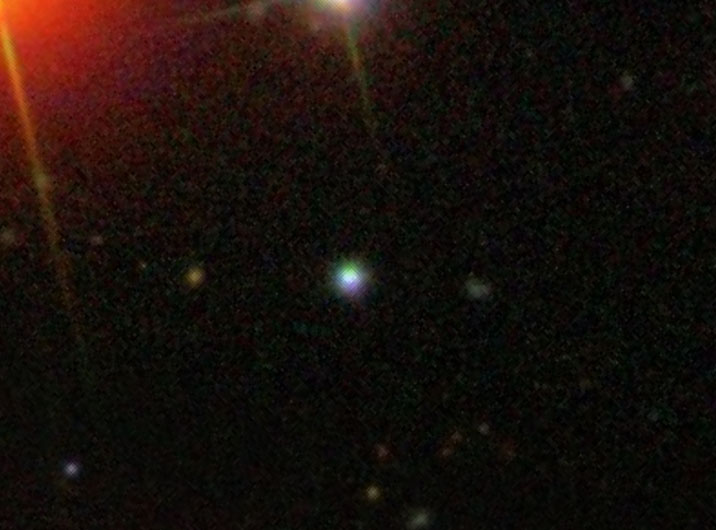
Astronomers have discovered a star on the outskirts of the Milky Way Galaxy with a chemical composition unlike anything they have ever seen. It matches theoretical expectations for the chemical footprint left behind by very massive, very early stars. This is the clearest evidence yet that the first stars included very massive stars. Models show such stars would not have left behind any other remnants, so a footprint like this is the best evidence that can be hoped for.
That first generation of stars in the Universe is thought to have included stars hundreds of times more massive than the Sun. A star this large would have completely exploded after a short lifetime, leaving behind no remnant for astronomers to study.
The gas released by the explosions of these very first, very massive stars would have had a different chemical signature than gas released by the explosions of less-massive, longer-lived stars. This gas is incorporated into the next generation of stars. So a second-generation star with the chemical footprint of a first-generation predecessor could tell us about the first stars in the Universe. But footprints from other, later supernovae will stomp out the trail of the first stars. So astronomers are looking for the oldest remaining stars, trying to find a clear, uncontaminated footprint from the first-generation stars.
A team of astronomers from the National Astronomical Observatory of Japan (NAOJ), the National Astronomical Observatories of China (NAOC), and other institutes used the Chinese survey telescope LAMOST to identify the oldest stars in the Milky Way Galaxy and measured their chemical compositions with NAOJ's Subaru Telescope. Among them, the team discovered LAMOST J1010+2358 with a chemical composition matching the expected footprint of first-generation stars. This is the clearest trace of very massive first-generation stars found to date, and strongly supports the theory that stars more than 140 times the mass of the Sun formed in the early Universe.
These results appeared as Qian-Fan Xing et al. "A metal-poor star with abundances from a pair-instability supernova" in Nature on June 7, 2023.






